Related Research Articles
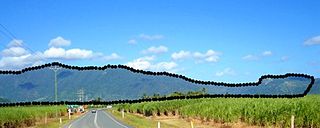
Australian Aboriginal religion and mythology is the sacred spirituality represented in the stories performed by Aboriginal Australians within each of the language groups across Australia in their ceremonies. Aboriginal spirituality includes the Dreamtime, songlines, and Aboriginal oral literature.
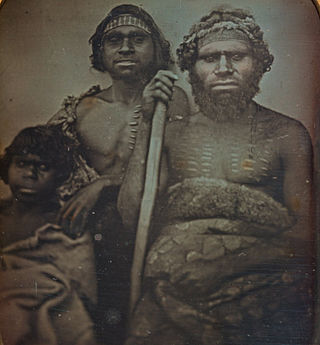
Koori is a demonym for Aboriginal Australians from a region that approximately corresponds to southern New South Wales and Victoria. The word derives from the Indigenous language Awabakal. For some people and groups, it has been described as a reclaiming of Indigenous language and culture, as opposed to relying on European titles such as "Aboriginal". The term is also used with reference to institutions involving Koori communities and individuals, such as the Koori Court, Koori Radio and Koori Knockout.
Fire-stick farming, also known as cultural burning and cool burning, is the practice of Aboriginal Australians regularly using fire to burn vegetation, which has been practised for thousands of years. There are a number of purposes for doing this special type of controlled burning, including to facilitate hunting, to change the composition of plant and animal species in an area, weed control, hazard reduction, and increase of biodiversity.
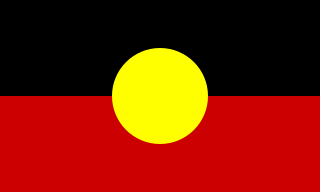
Aboriginal Australians are the various Indigenous peoples of the Australian mainland and many of its islands, excluding the ethnically distinct people of the Torres Strait Islands.

Bush tucker, also called bush food, is any food native to Australia and historically eaten by Indigenous Australians, the Aboriginal and Torres Strait Islander peoples, but it can also describe any native flora, fauna, or funga used for culinary or medicinal purposes, regardless of the continent or culture. Animal native foods include kangaroo, emu, witchetty grubs and crocodile, and plant foods include fruits such as quandong, kutjera, spices such as lemon myrtle and vegetables such as warrigal greens and various native yams.

The Dharug language, also spelt Darug, Dharuk, and other variants, and also known as the Sydney language, Gadigal language, is an Australian Aboriginal language of the Yuin–Kuric group that was traditionally spoken in the region of Sydney, New South Wales, until it became extinct due to effects of colonisation. It is the traditional language of the Dharug people. The Dharug population has greatly diminished since the onset of colonisation. Eora language has sometimes been used to distinguish a coastal dialect from hinterland dialects, but there is no evidence that Aboriginal peoples ever used this term, which simply means "people". Some effort has been put into reviving a reconstructed form of the language.
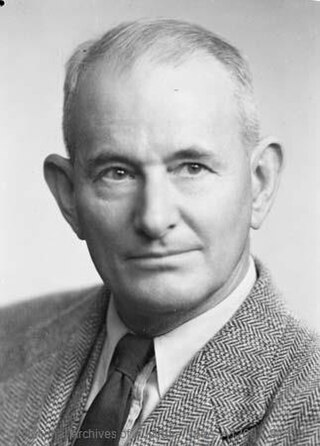
Charles Pearcy Mountford OBE was an Australian anthropologist and photographer. He is known for his pioneering work on Indigenous Australians and his depictions and descriptions of their art. He also led the American-Australian Scientific Expedition to Arnhem Land.
Kevin John Gilbert was an Aboriginal Australian author, activist, artist, poet, playwright and printmaker. A Wiradjuri man, Gilbert was born on the banks of the Lachlan River in New South Wales. Gilbert was the first Aboriginal playwright and printmaker. He was an active human rights defender and was involved in the establishment of the Aboriginal Tent Embassy in 1972 as well as various protests to advocate for Aboriginal Australian sovereignty.
Australian Aboriginal culture includes a number of practices and ceremonies centered on a belief in the Dreamtime and other mythology. Reverence and respect for the land and oral traditions are emphasised. Over 300 languages and other groupings have developed a wide range of individual cultures. Due the colonization of Australia under terra nullius concept these cultures were treated as one monoculture. Australian Aboriginal art has existed for thousands of years and ranges from ancient rock art to modern watercolour landscapes. Aboriginal music has developed a number of unique instruments. Contemporary Australian Aboriginal music spans many genres. Aboriginal peoples did not develop a system of writing before colonisation, but there was a huge variety of languages, including sign languages.

The history of Indigenous Australians began at least 65,000 years ago when humans first populated the Australian continental landmasses. This article covers the history of Aboriginal Australian and Torres Strait Islander peoples, two broadly defined groups which each include other sub-groups defined by language and culture.
The taboo on the dead includes the taboo against touching of the dead, those surrounding them and anything associated with the dead.
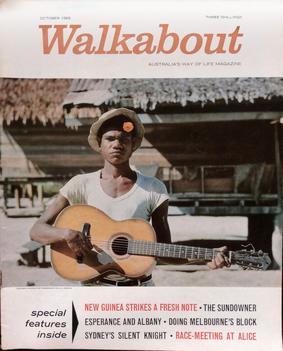
Walkabout was an Australian illustrated magazine published from 1934 to 1974 combining cultural, geographic, and scientific content with travel literature. Initially a travel magazine, in its forty-year run it featured a popular mix of articles by travellers, officials, residents, journalists, naturalists, anthropologists and novelists, illustrated by Australian photojournalists. Its title derived "from the supposed 'racial characteristic of the Australian Aboriginal who is always on the move'."
Indigenous Australians are people with familial heritage from, and/or recognised membership of, the various ethnic groups living within the territory of present day Australia prior to British colonisation. They consist of two distinct groups, which includes many ethnic groups: the Aboriginal Australians of the mainland and many islands, including Tasmania, and the Torres Strait Islanders of the seas between Queensland and Papua New Guinea, located in Melanesia. The term Aboriginal and Torres Strait Islander peoples or the person's specific cultural group, is often preferred, though the terms First Nations of Australia, First Peoples of Australia and First Australians are also increasingly common; 812,728 people self-identified as being of Aboriginal and/or Torres Strait Islander origin in the 2021 Australian Census, representing 3.2% of the total population of Australia. Of these Indigenous Australians, 91.4% identified as Aboriginal; 4.2% identified as Torres Strait Islander; while 4.4% identified with both groups. Since 1995, the Australian Aboriginal flag and the Torres Strait Islander flag have been official flags of Australia.
The Convincing Ground Massacre was a massacre of the Indigenous Gunditjmara people Kilcarer gundidj clan by British settler whalers based at Portland Bay in South-Eastern Australia. It was part of the wider Eumeralla Wars between the British colonisers and Gunditjmara. Tensions between the two groups had been building since the establishment of the town as a whaling station some five years previously, however, around 1833 or 1834, a dispute over a beached whale caused events to escalate.

Indigenous health in Australia examines health and wellbeing indicators of Indigenous Australians compared with the rest of the population. Statistics indicate that Aboriginal Australians and Torres Strait Islanders are much less healthy than other Australians. Various government strategies have been put into place to try to remediate the problem; there has been some improvement in several areas, but statistics between Indigenous Australians and the rest of the Australian population still show unacceptable levels of difference.

Bruce Pascoe is an Australian writer of literary fiction, non-fiction, poetry, essays and children's literature. As well as his own name, Pascoe has written under the pen names Murray Gray and Leopold Glass. Pascoe identifies as Aboriginal. Since August 2020, he has been Enterprise Professor in Indigenous Agriculture at the University of Melbourne.
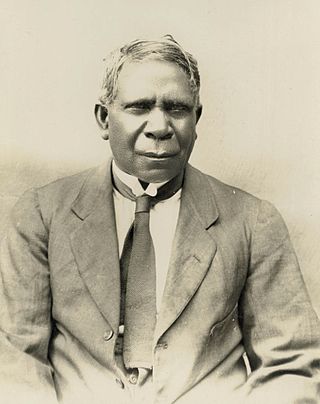
Indigenous Australian literature is the fiction, plays, poems, essays and other works authored by Aboriginal and Torres Strait Islander people of Australia.
The Wulpura were an indigenous Australian people of the state of Queensland. Their language, Kuku Waldja, has been listed as a dialect of Kuku Yalanji, but there does not appear to be any data available.

Heather George (1907–1983) was a commercial photographer known for her industrial, fashion and outback photography, and a designer and painter.
Peter John Read is an Australian historian specialising in the history of Indigenous Australians. Read worked as a teacher and civil servant before co-founding Link-Up. Link-Up was an organisation that reunited aboriginal families who had undergone forcible separation of children from their families through government intervention. Read coined the term "Stolen Generations" to refer to the children subject to these interventions in a 1981 study. After graduating with a doctorate, Read worked as an academic for the rest of his career primarily working on Australian Indigenous history. He has also published work on the relationship between non-indigenous Australians and the land. In 2019, Read was made a Member of the Order of Australia for his work on Indigenous history.
References
- ↑ o'Kane, Michael (2013). "Project MUSE - Laws, Customs, and Practices in Australian Native Title". Collaborative Anthropologies. 6: 334–352. doi:10.1353/cla.2013.0013.
- ↑ Peterson, Nicolas (2003). Myth of the “walkabout”. Routledge. ISBN 9780203464786.
- ↑ Prout, S. (2008). "On the move? Indigenous temporary mobility practices in Australia". Centre for Aboriginal Economic Policy Research (48). ISBN 0 7315 4947 3. ISSN 1442-3871 . Retrieved 8 March 2020.
- ↑ Bell, Martin; Ward, Gary (1 January 2000). "Comparing temporary mobility with permanent migration". Tourism Geographies. 2 (1): 87–107. CiteSeerX 10.1.1.584.6777 . doi:10.1080/146166800363466. ISSN 1461-6688.